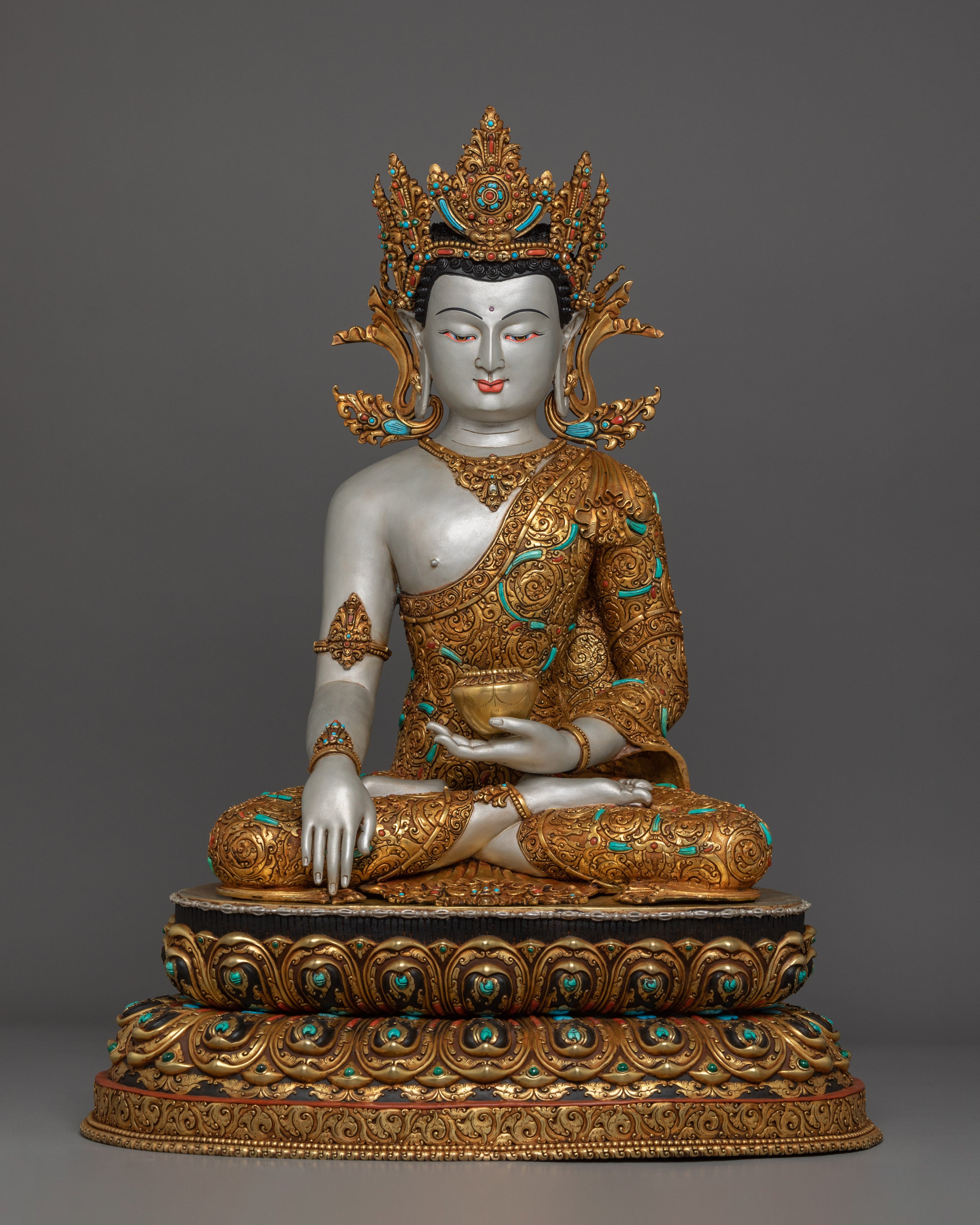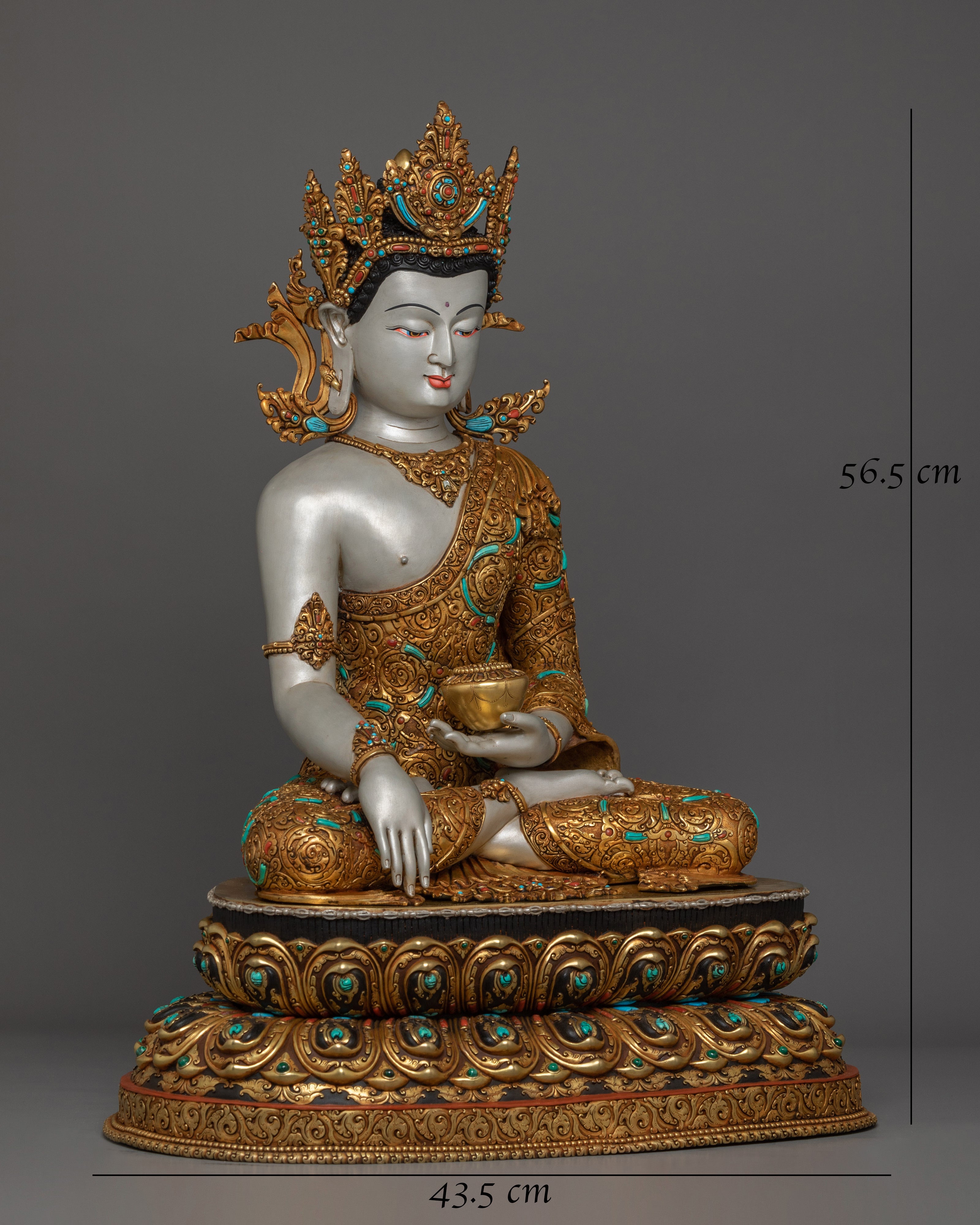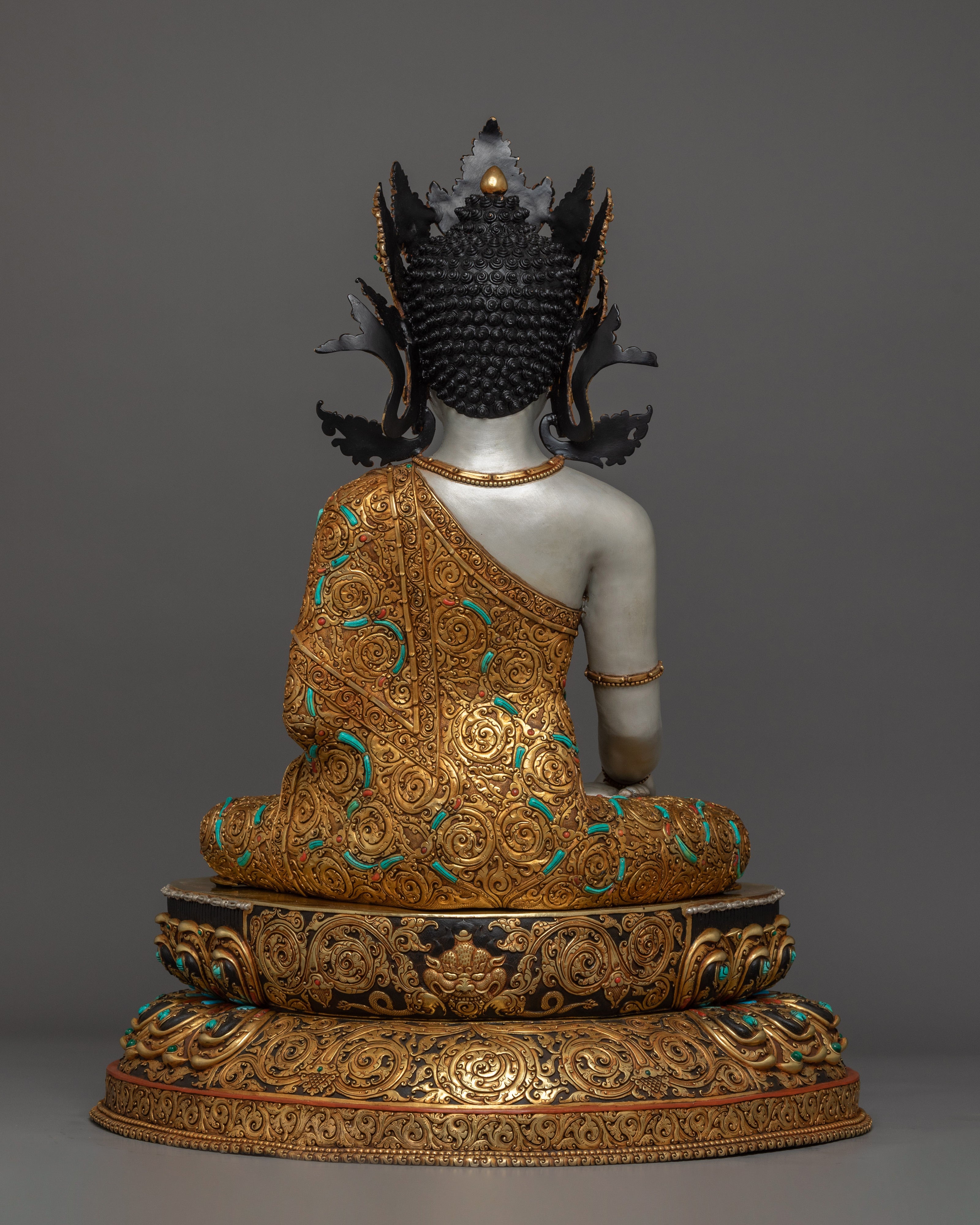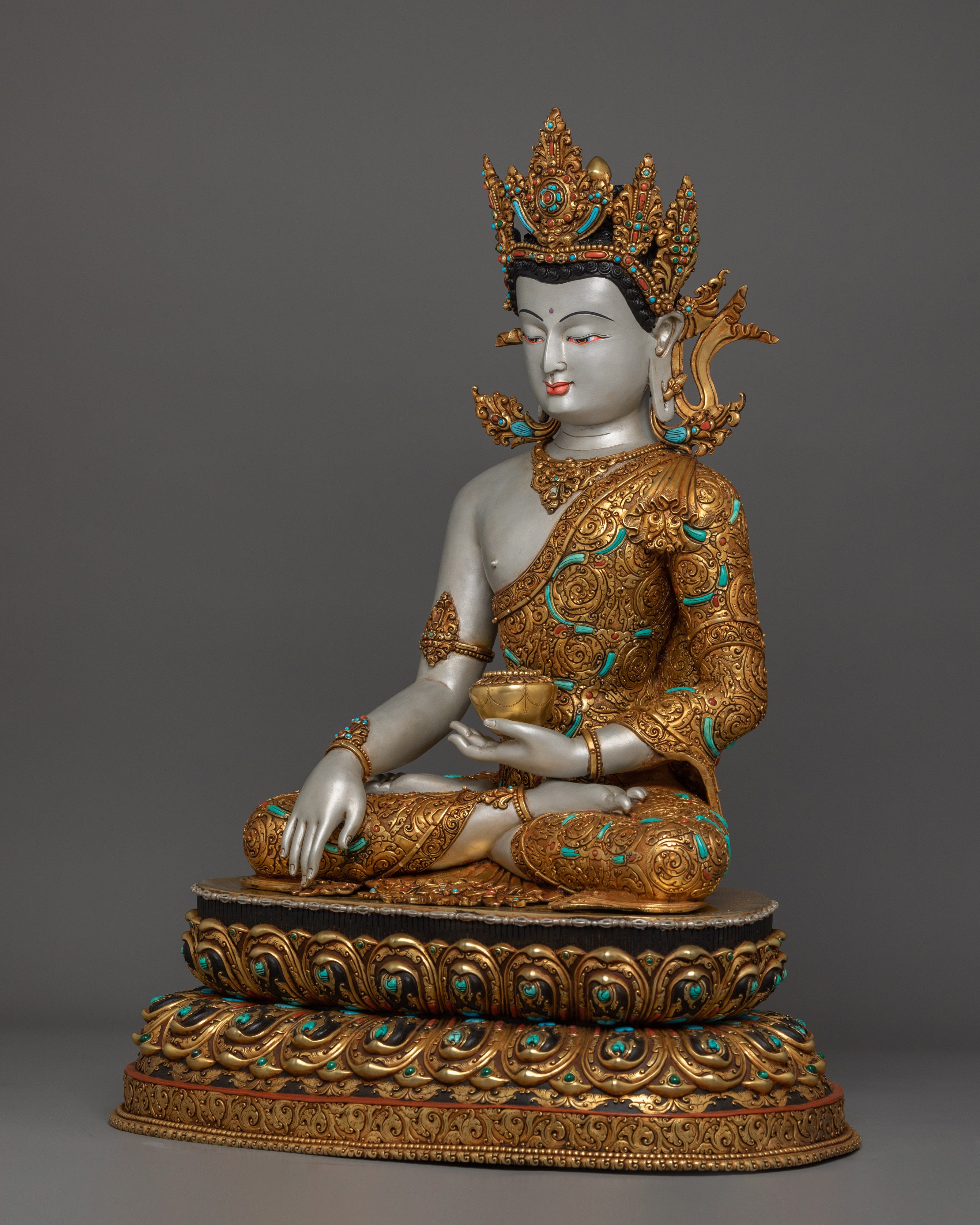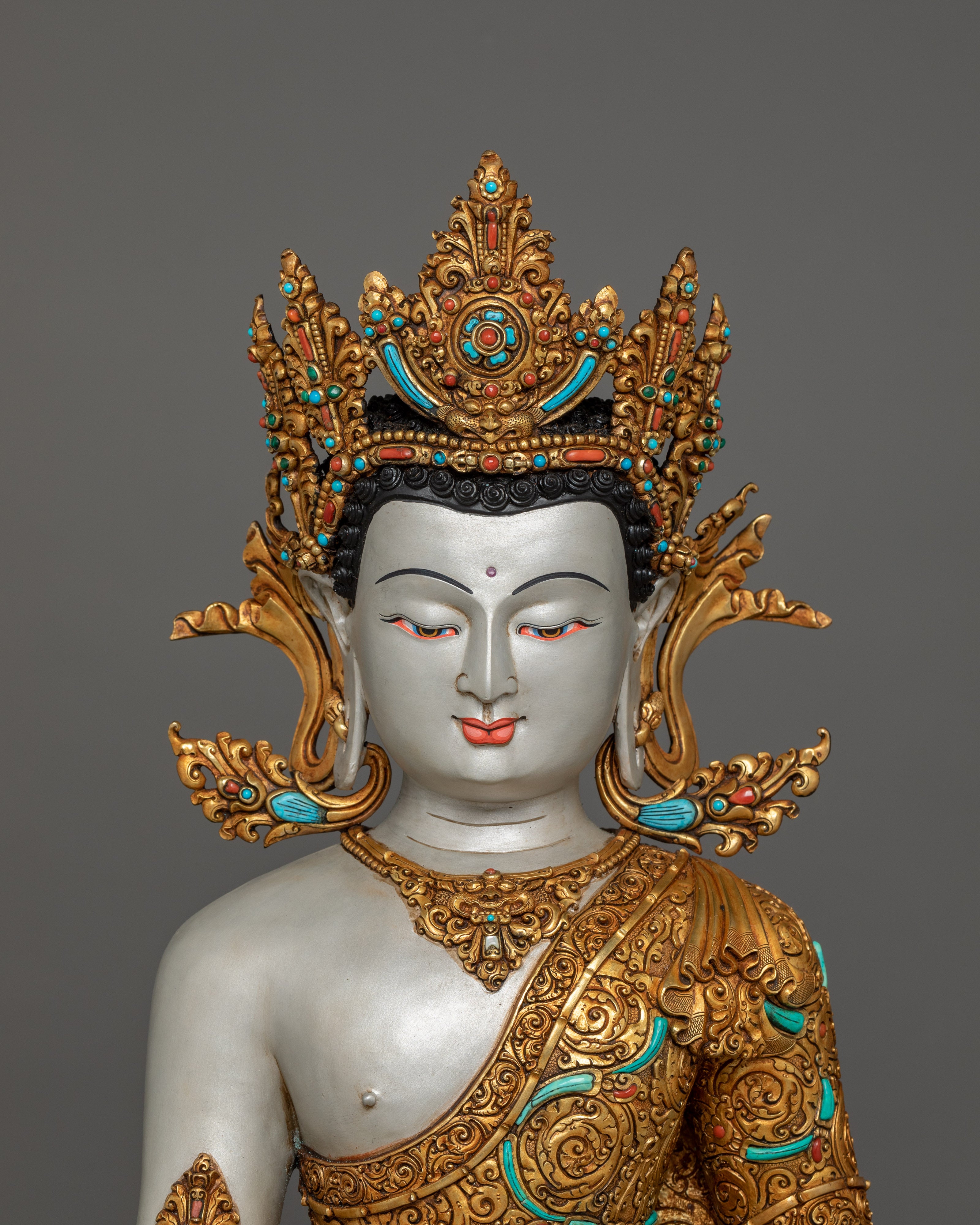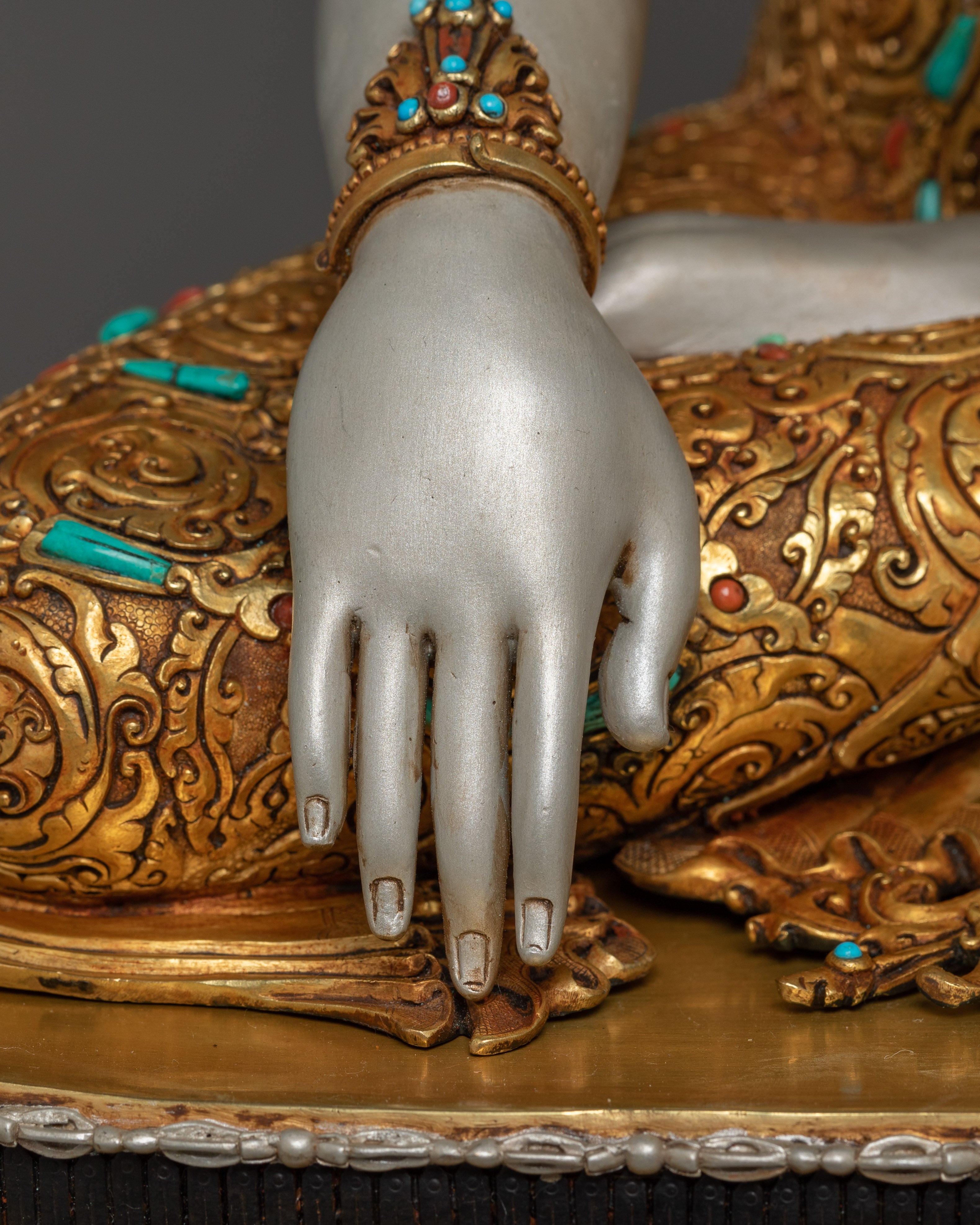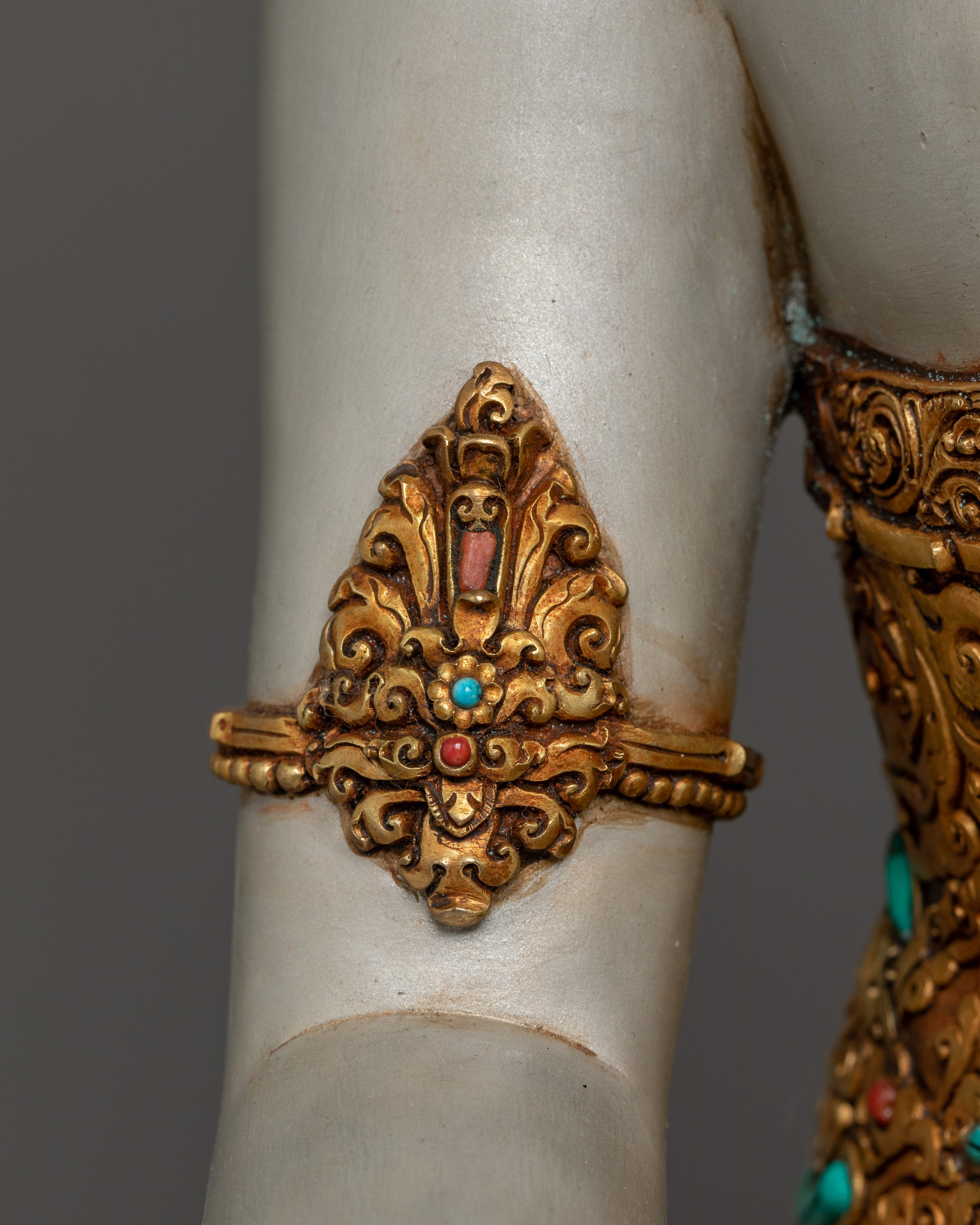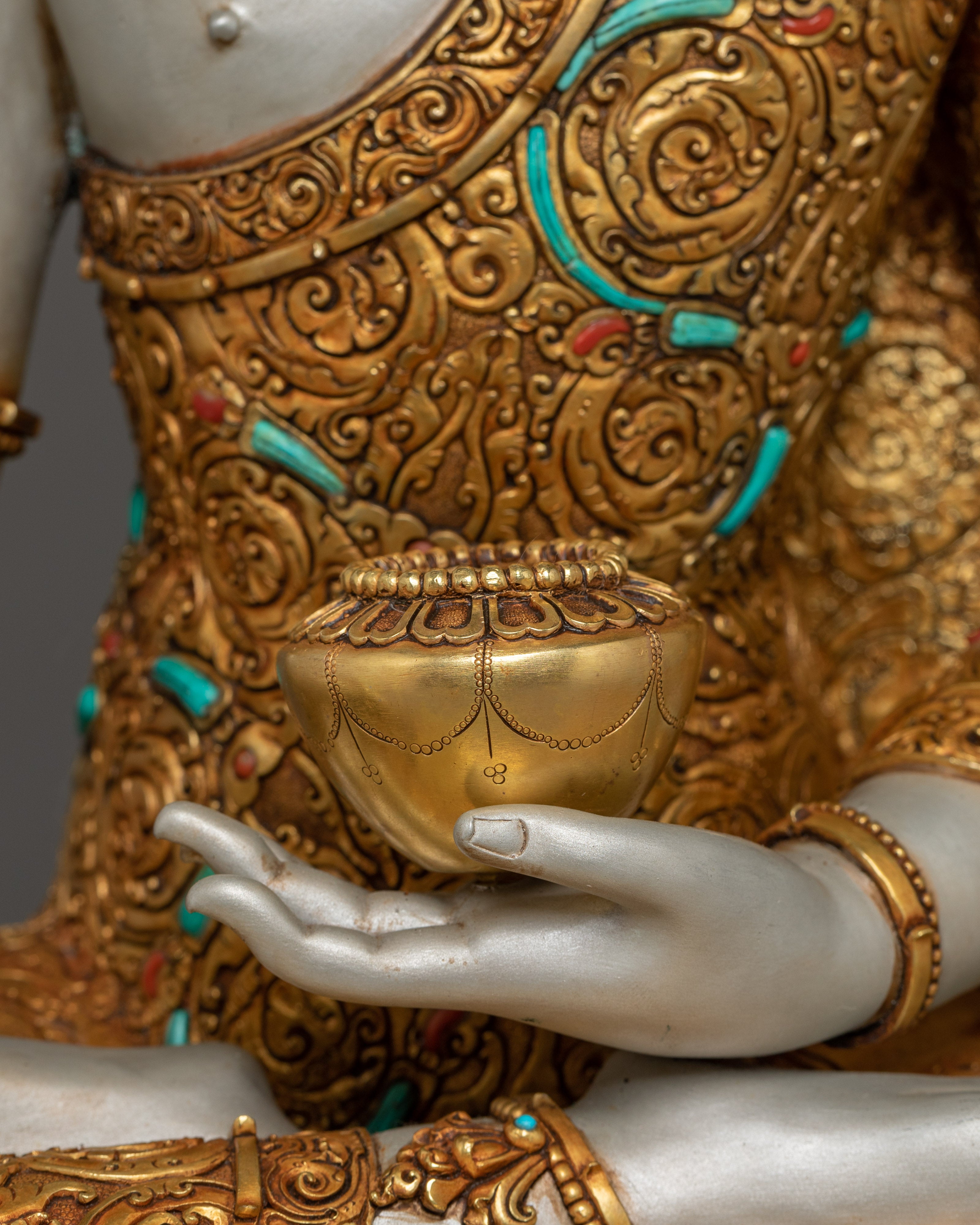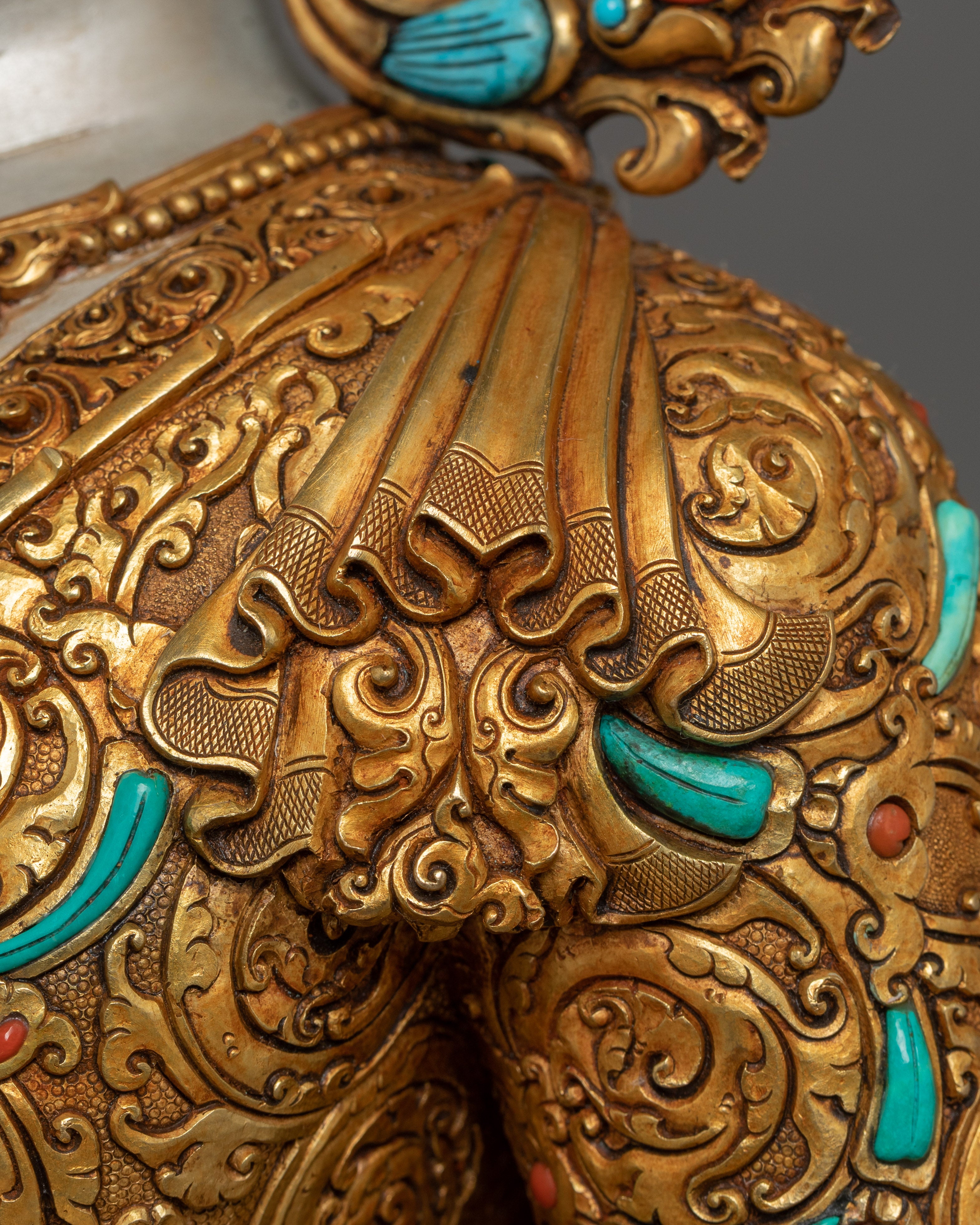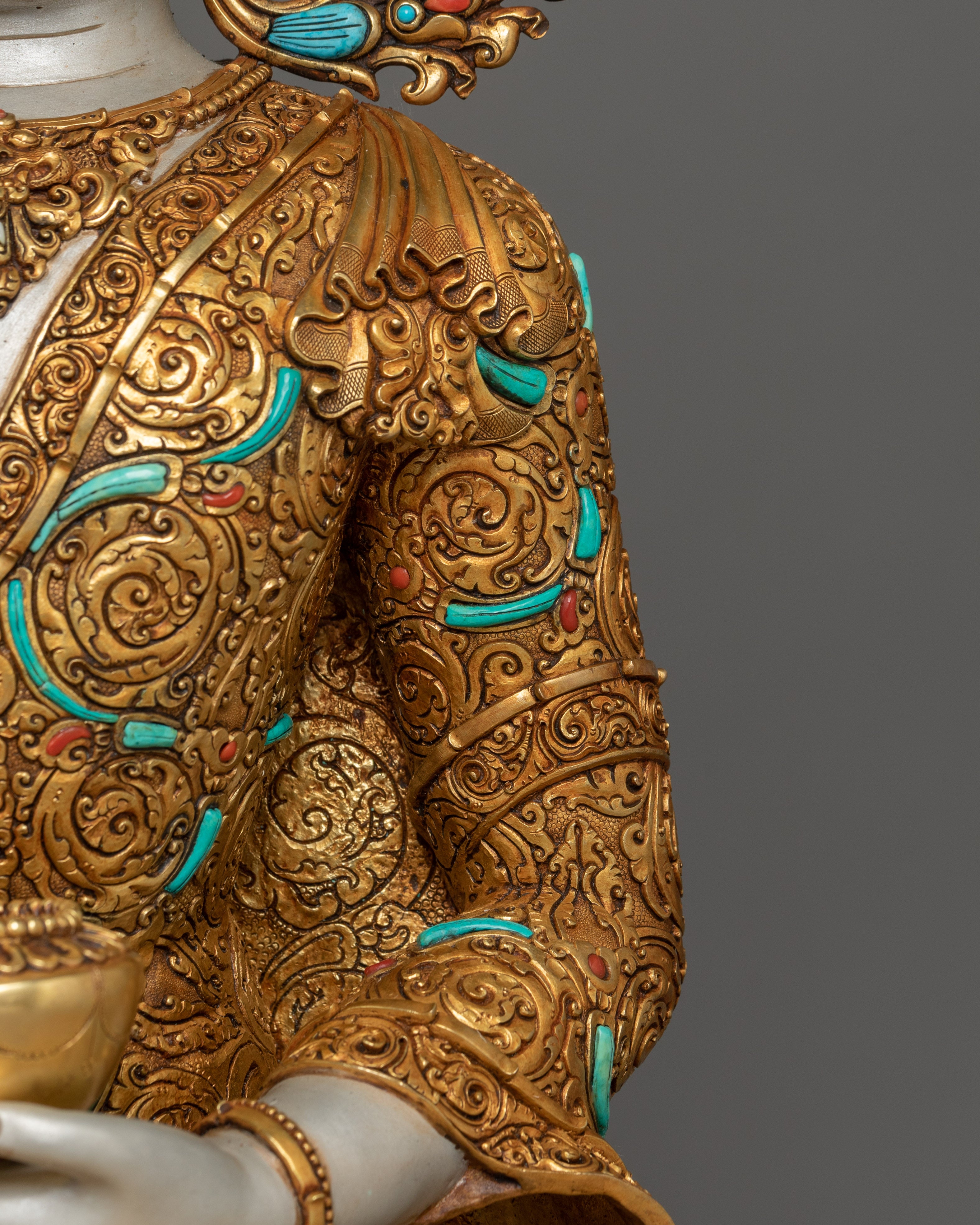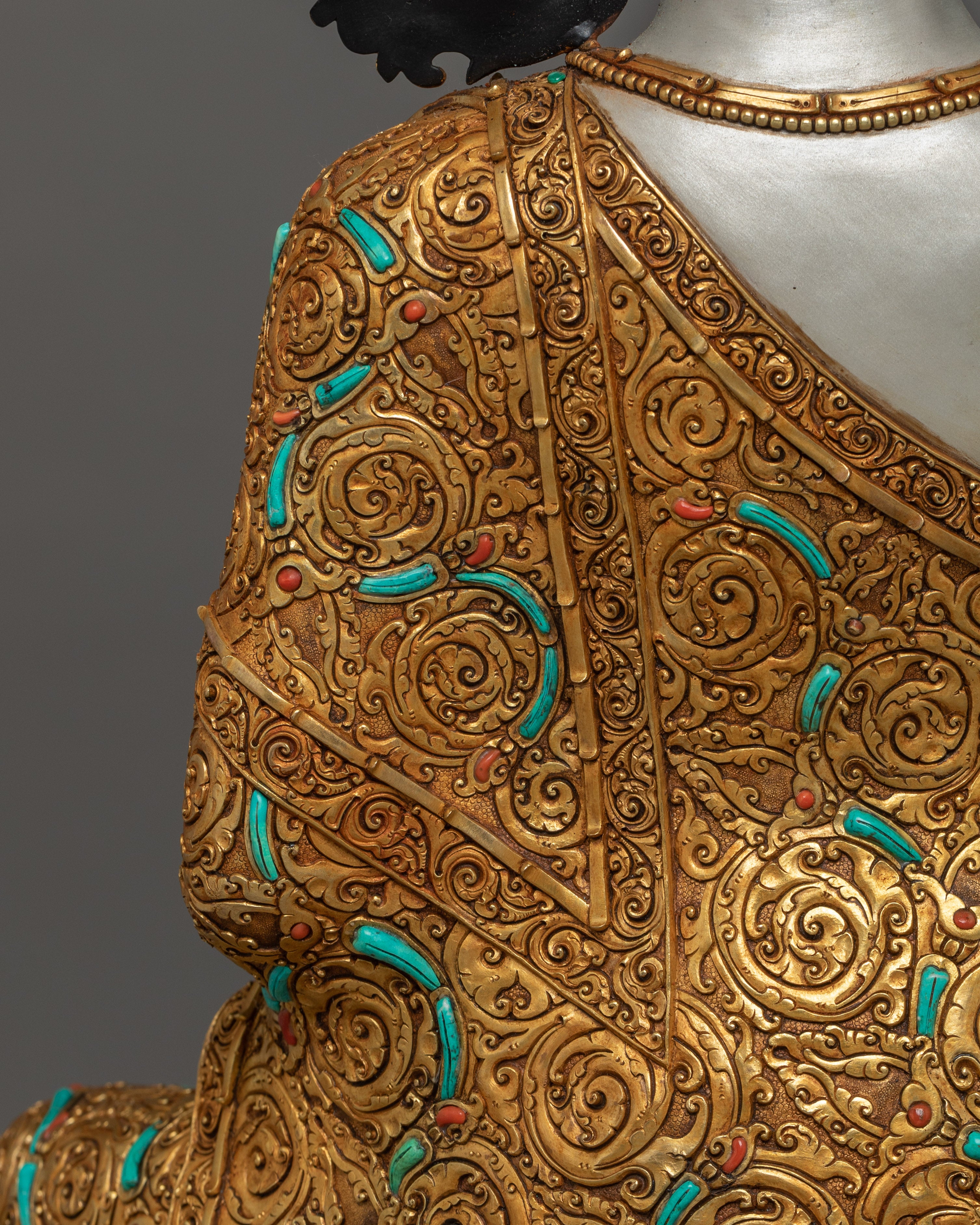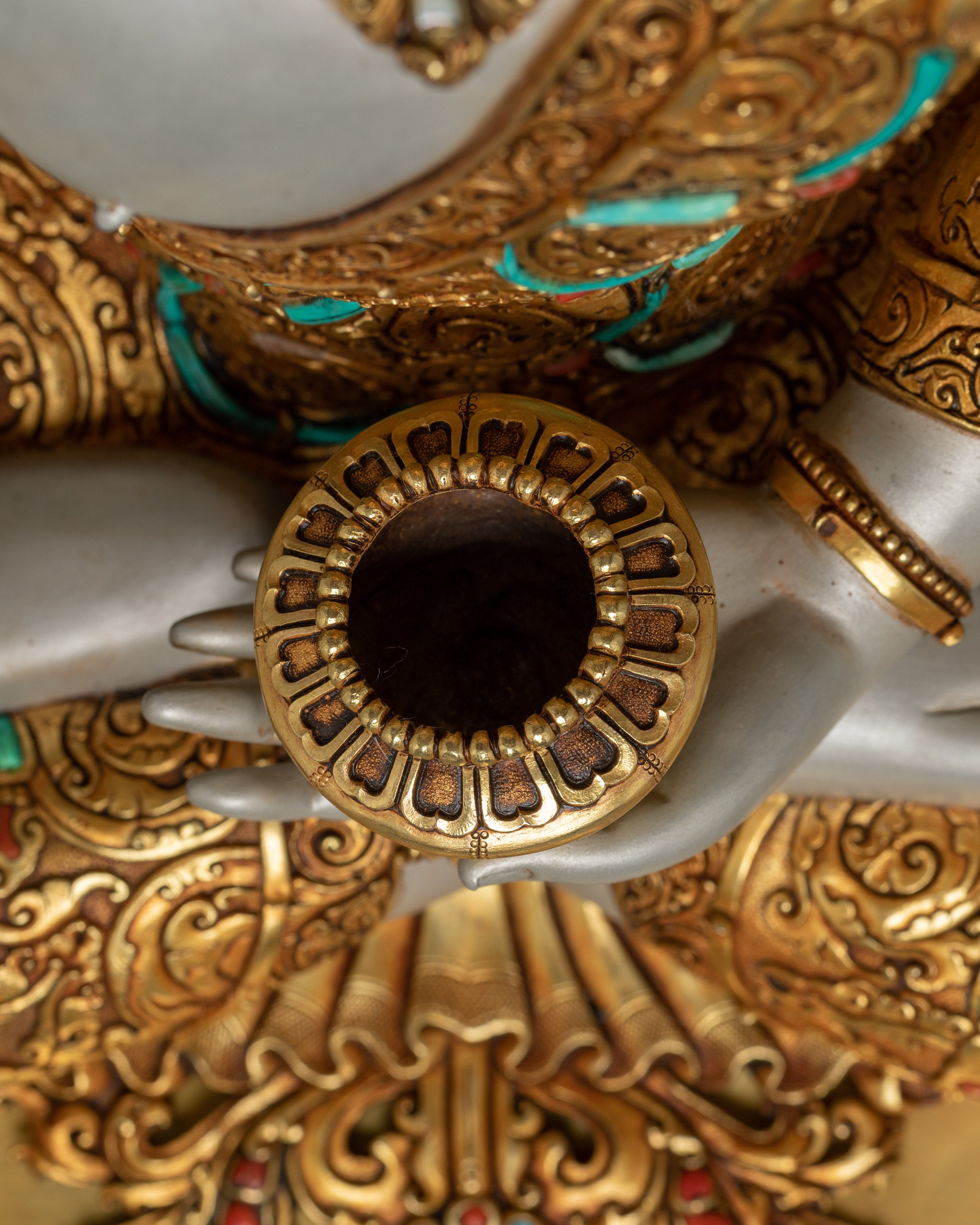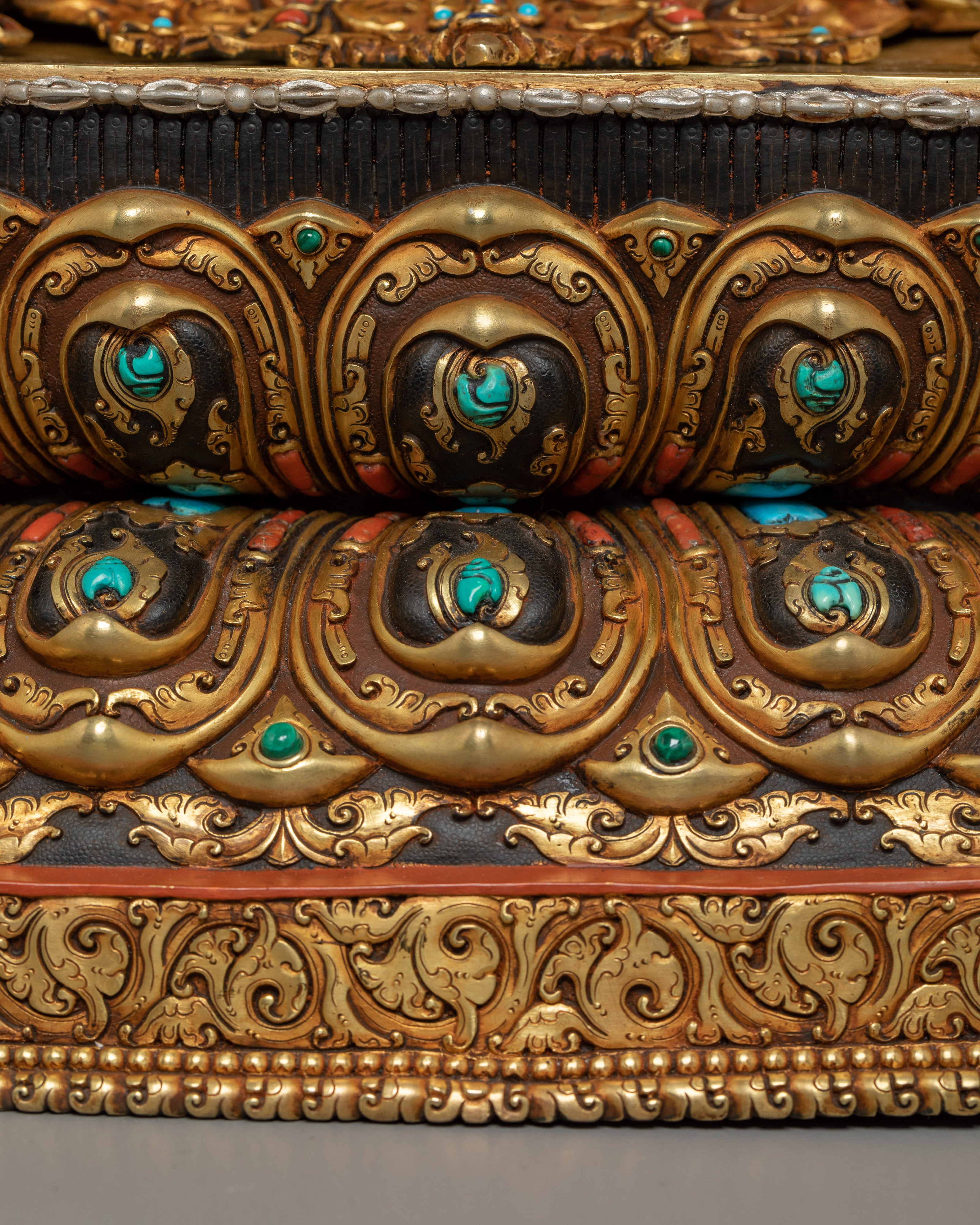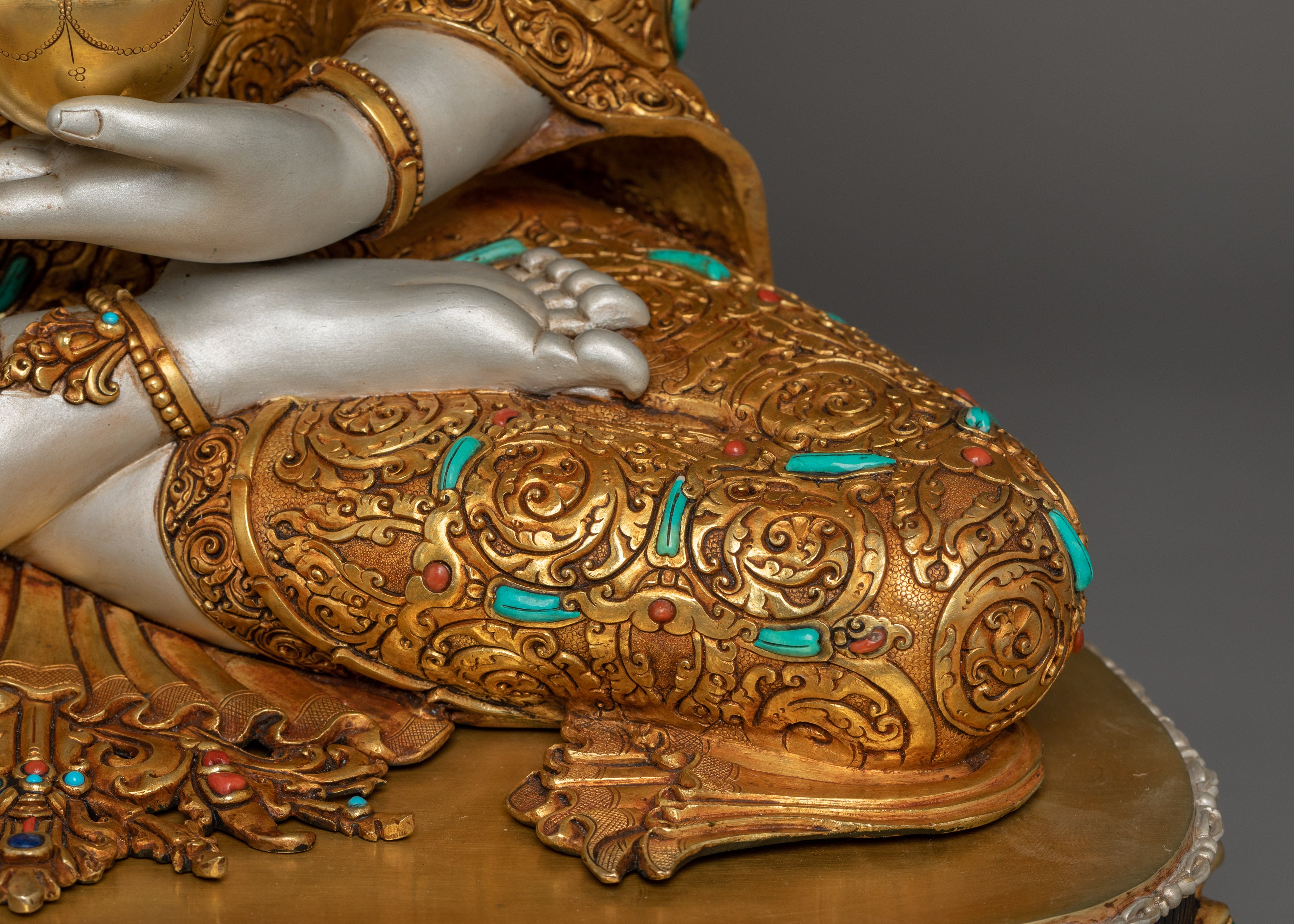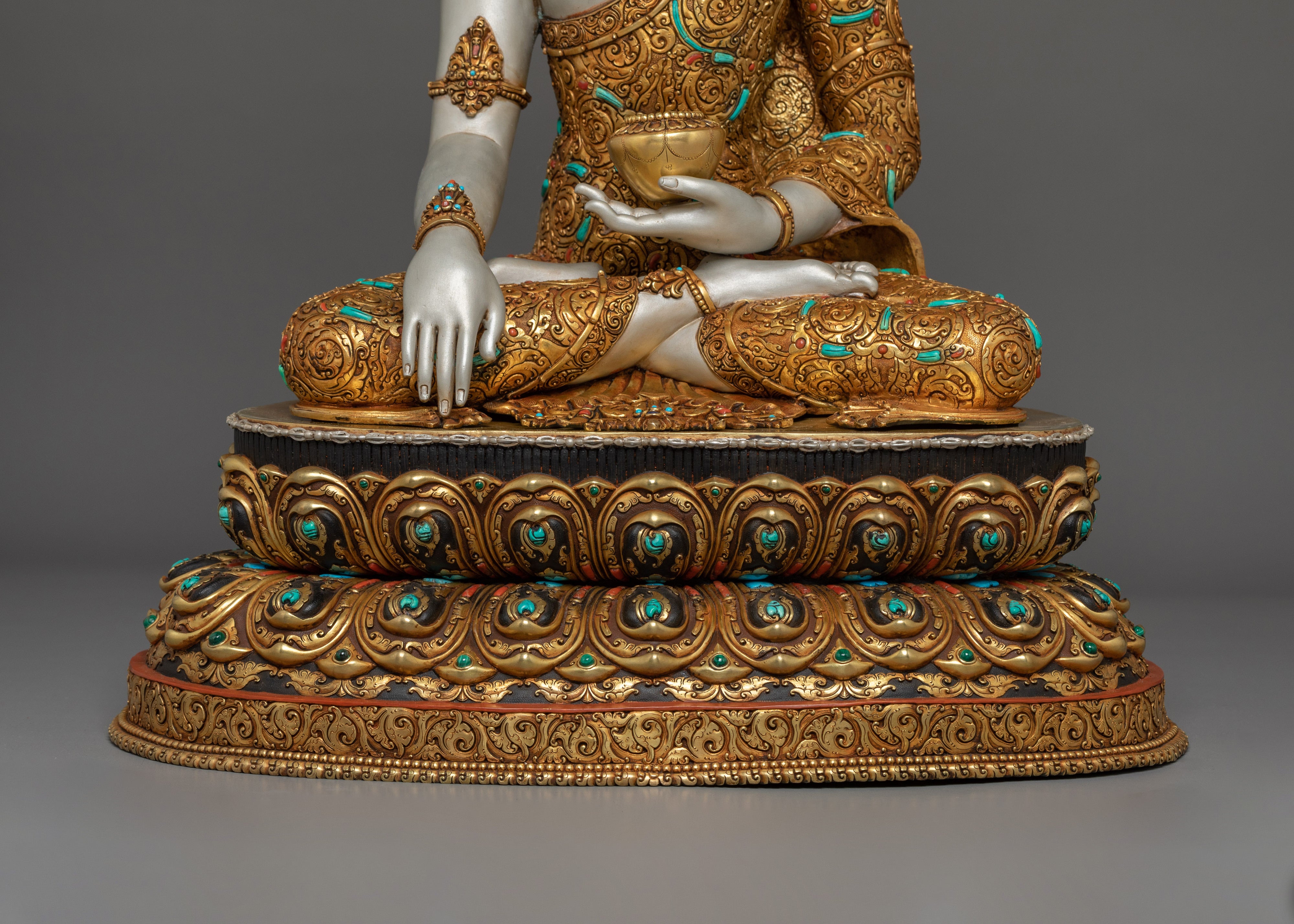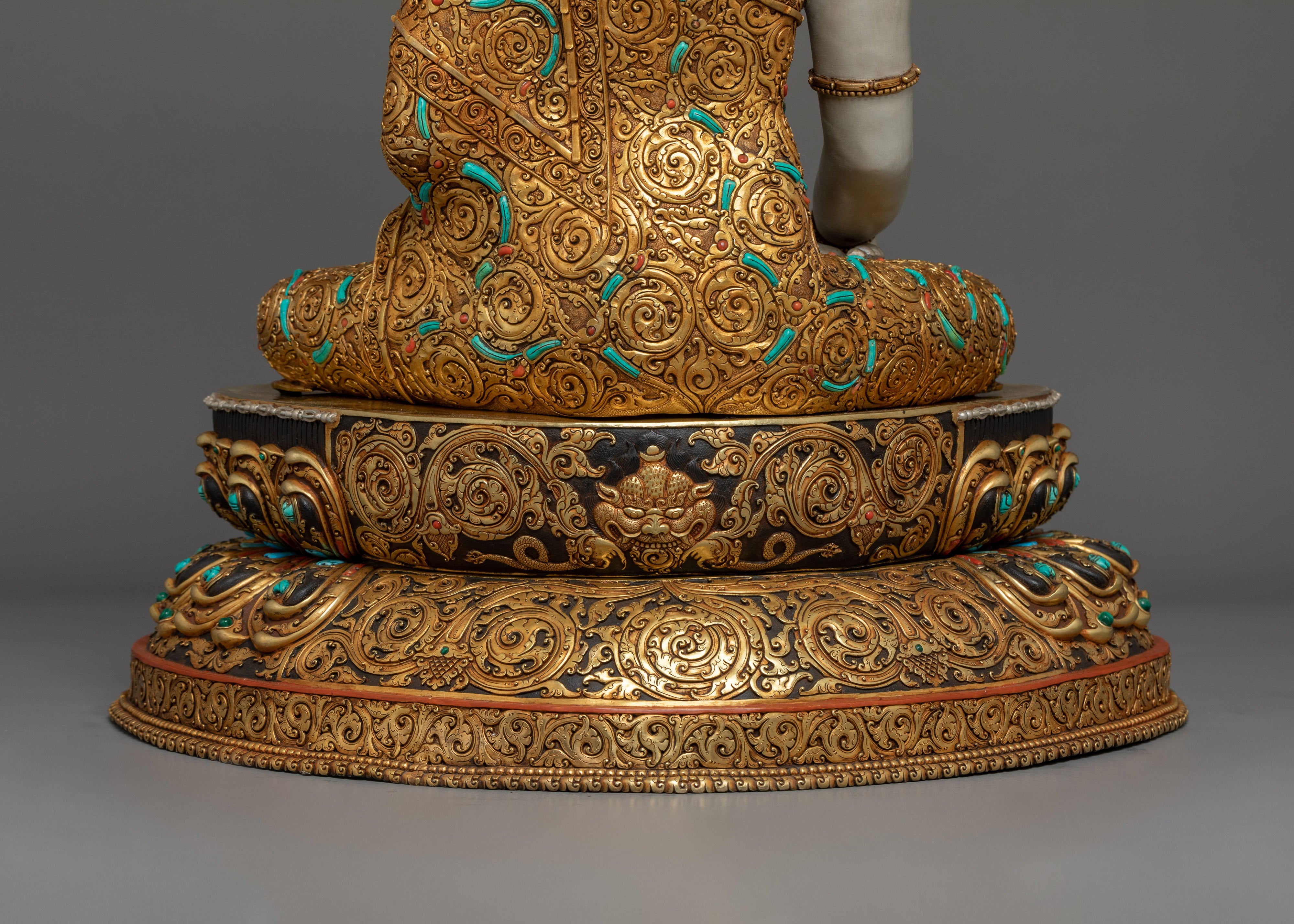Description
Handmade Tibetan Crown Shakyamuni Buddha Statue | A Tantric Vision
The Tibetan Crown Shakyamuni Buddha Statue stands at an impressive 22.2 inches (56.5 cm) in height, with a base width of 17.1 inches (43.5 cm), and weighs approximately 15.67 kilograms. Crafted from a copper body, gilded with a triple-layer 24K gold, and acrylic paintings that highlight intricate details and spiritual symbolism. Adorned with hand-carved gemstones, the statue radiates a regal and sacred presence, embodying both artistic mastery and deep reverence. This depiction of Shakyamuni in crowned and jeweled form reflects the influence of esoteric Buddhist traditions, representing the Buddha in his royal, transcendental aspect.
Shakyamuni Buddha is seated in the padmasana (lotus posture), with legs crossed and the soles of the feet facing upward, symbolizing stability, meditation, and spiritual awakening. He wears a monk's robe, often draped over one shoulder, representing renunciation of worldly life and devotion to the spiritual path. The robe is richly decorated in more elaborate representations, symbolizing the Buddha's inner purity and the sacredness of his teachings. The right hand reaches down to touch the earth in Bhumisparsha mudra, while the left hand rests in meditation on the lap with the alms Bowl. This gesture commemorates the moment of enlightenment when the Buddha called the earth to witness his victory over Mara, the forces of delusion and temptation. The Buddha's expression is serene and meditative, with downcast eyes and a gentle smile, reflecting inner peace, equanimity, and awakened bliss. The crown symbolizes the Buddha's ability to guide beings toward liberation while remaining unattached to worldly desires.
Size: 22.2"/56.5cm (Height) x 17.1"/43.5cm (Base)
Weight: 15.67 kg
Material: 24K Gold Gilded, Acrylic Paintings, Copper Body, Hand-carved Gemstones
Shakyamuni Buddha, also known as Siddhartha Gautama, is the historical founder of Buddhism. Born as a prince in the Shakya clan in southern Nepal around the 6th century BCE, he was raised in luxury but became deeply troubled by the realities of human suffering, age, sickness, and death. This led him to renounce his royal life in search of a solution to suffering. After years of rigorous ascetic practices and meditation, Siddhartha realized that neither extreme self-indulgence nor self-mortification led to true liberation. He adopted the "Middle Way," a balanced approach to spiritual practice. Seated in meditation under a pipal (Bodhi) tree near Gaya, he attained enlightenment and became the Buddha, or the "Awakened One."

